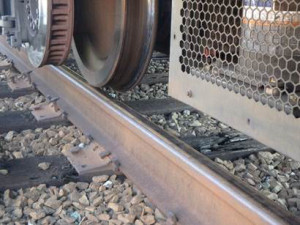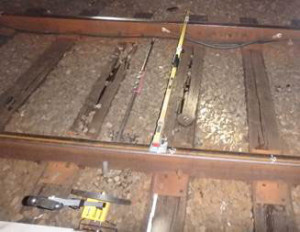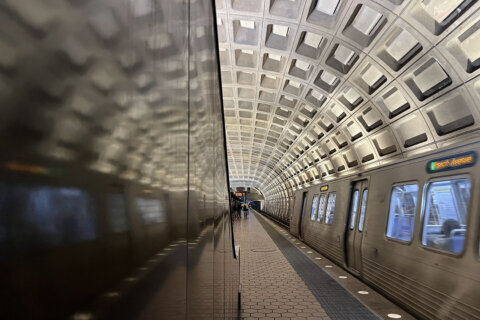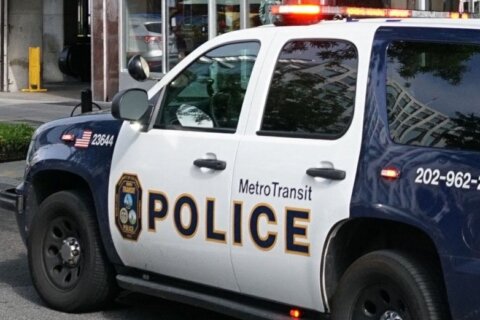WASHINGTON — Federal investigators looking into last week’s derailment outside the East Falls Church station found an entire stretch of tracks with crumbling rail ties that should have been fixed years ago and rails that were nearly 2 inches too far apart.

National Transportation Safety Board investigators also said Metro officials weren’t conducting inspections frequently enough. The Federal Transit Administration said the findings are consistent with its own investigation, which found “systemic safety deficiencies in the maintenance and repair” of tracks.
In preliminary findings released Wednesday afternoon, the NTSB said the tracks were 1 and 3/4 inches farther apart than Metro’s standard (59 inches rather than 57 and 1/14 inches), and there were no effective cross ties holding the rails together for more than 30 feet of track.
Metro’s standards require no more than 10 feet between effective cross ties, which would have meant 12 working crossties in the area.
Metro policies call for the tracks to have been inspected every two weeks. However records show the inspections in this area were only done about once a month.

Metro’s internal preliminary findings blamed a “wide gauge,” which essentially means that the tracks were too far apart. Metro acknowledged that the track ties in the interlocking area where the train was crossing from one track to another were deteriorated, which allowed the rails to slide farther apart. The fourth and fifth cars of the outbound six-car Silver Line train derailed July 29, leading officials to cut off service to East Falls Church for three days.
In a statement, the FTA said the preliminary NTSB findings are “consistent” with FTA findings uncovered during an inspection “safety blitz” that agency undertook in the spring.
“The investigation revealed systemic safety deficiencies in the maintenance and repair of track,” the statement said.
The preliminary information released by Metro did not address root causes of the issue, although Chief Safety Officer Patrick Lavin has said he hopes for a new focus on root causes in investigations. He only joined the agency in May.
Metro told the NTSB investigators that it would hold a “safety stand-down” on Wednesday to “clarify the expectations for remedial actions following track inspections.”
Metro supervisors will also accompany track inspectors during inspections of crossover areas that will get heavy use during 24/7 work zones, and crossovers will now be included in checks by Metro’s automated track inspection vehicle.
Also, Metro promises to follow its own standards that require the track areas to be inspected twice weekly.






